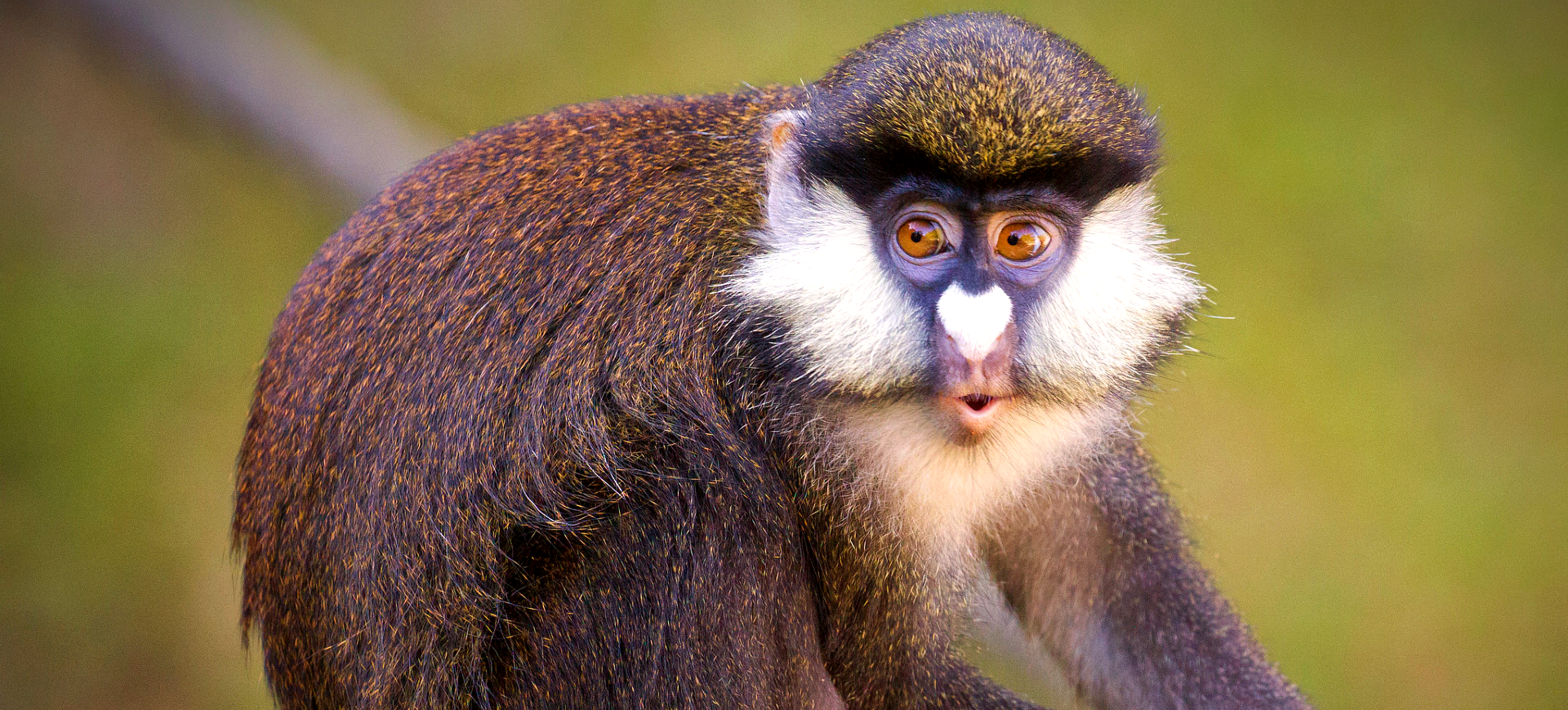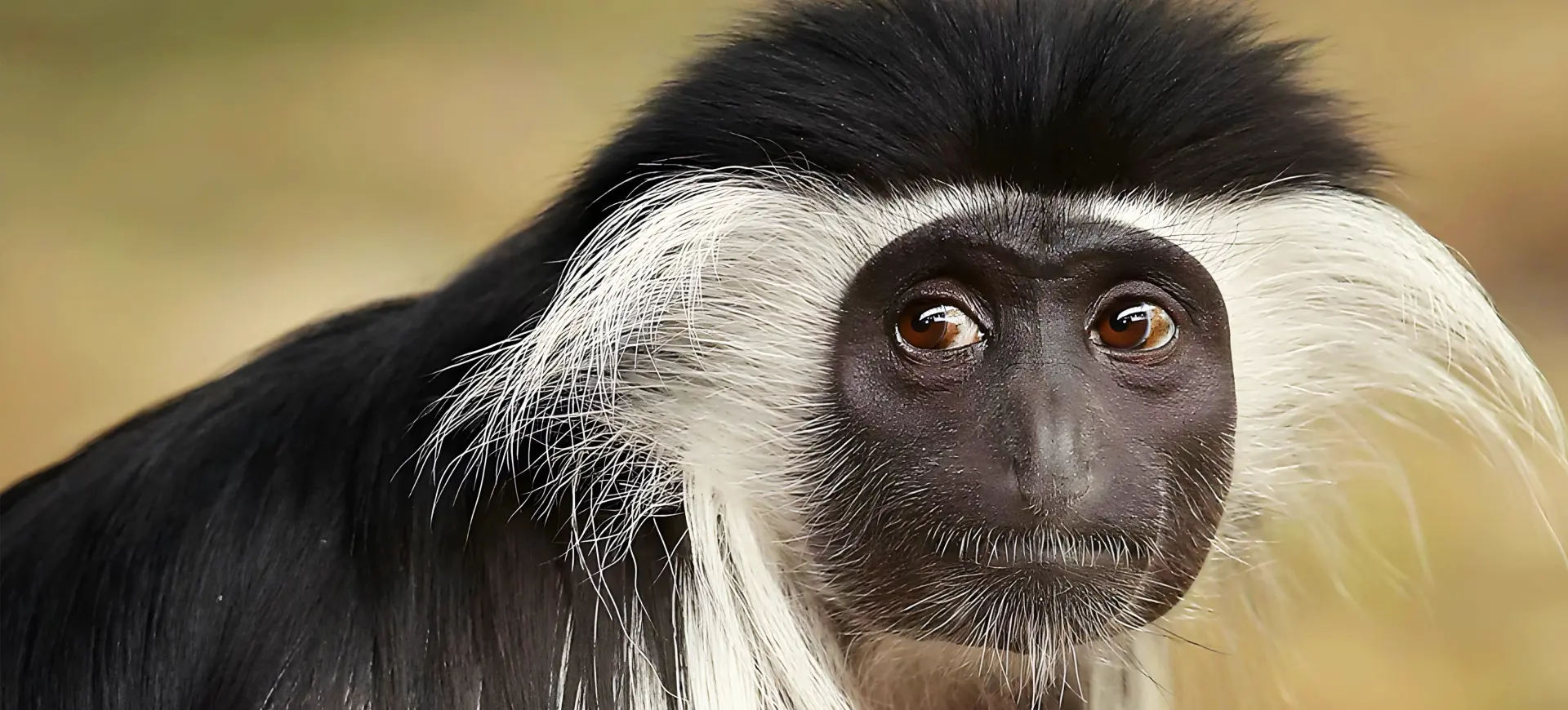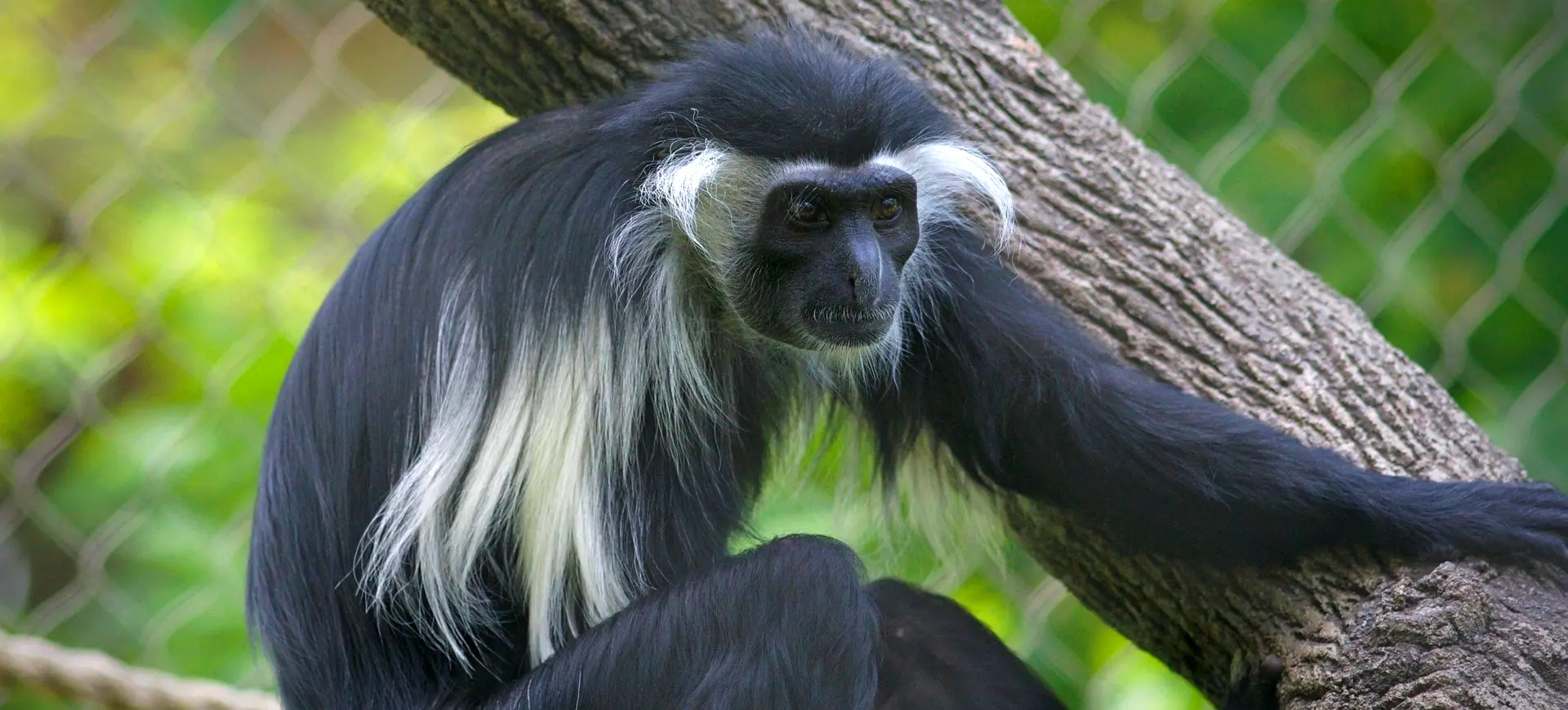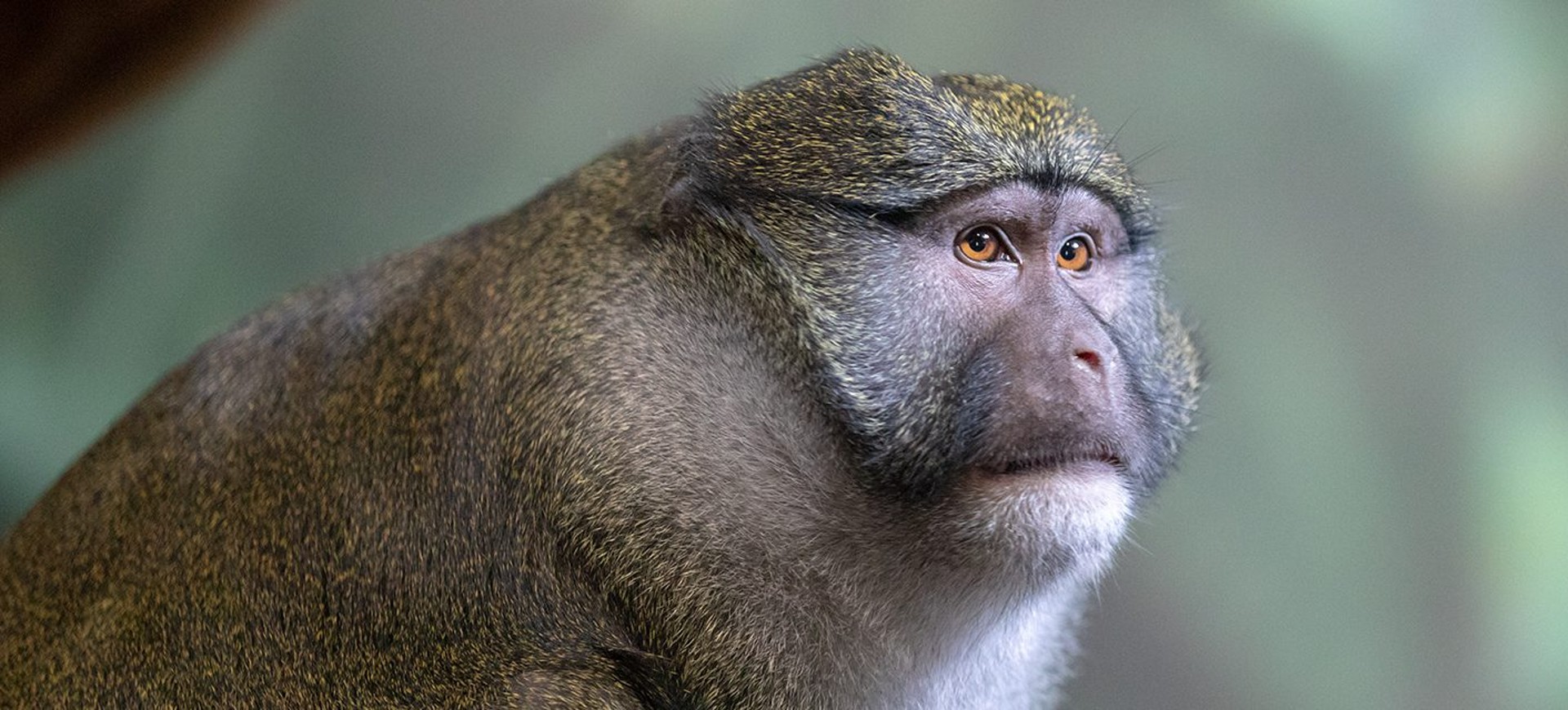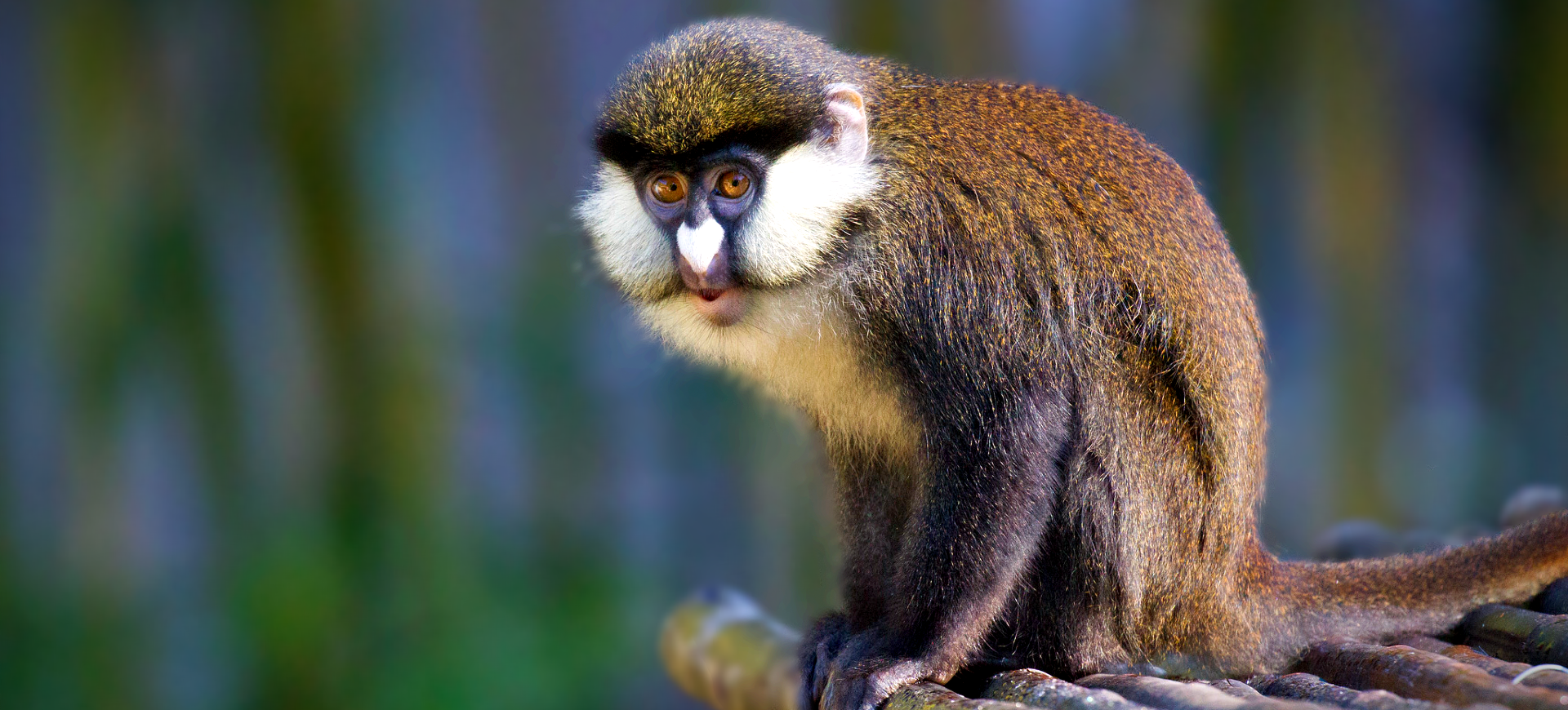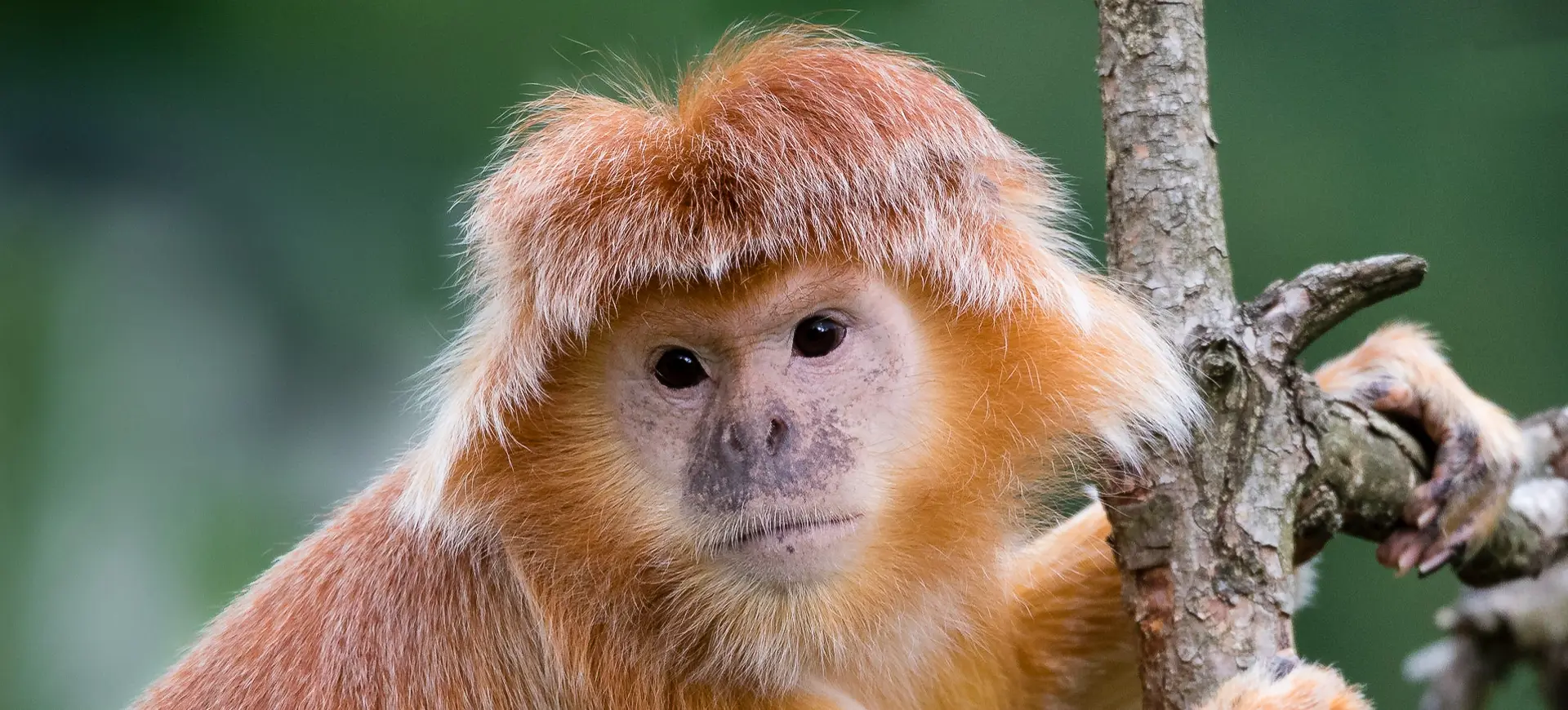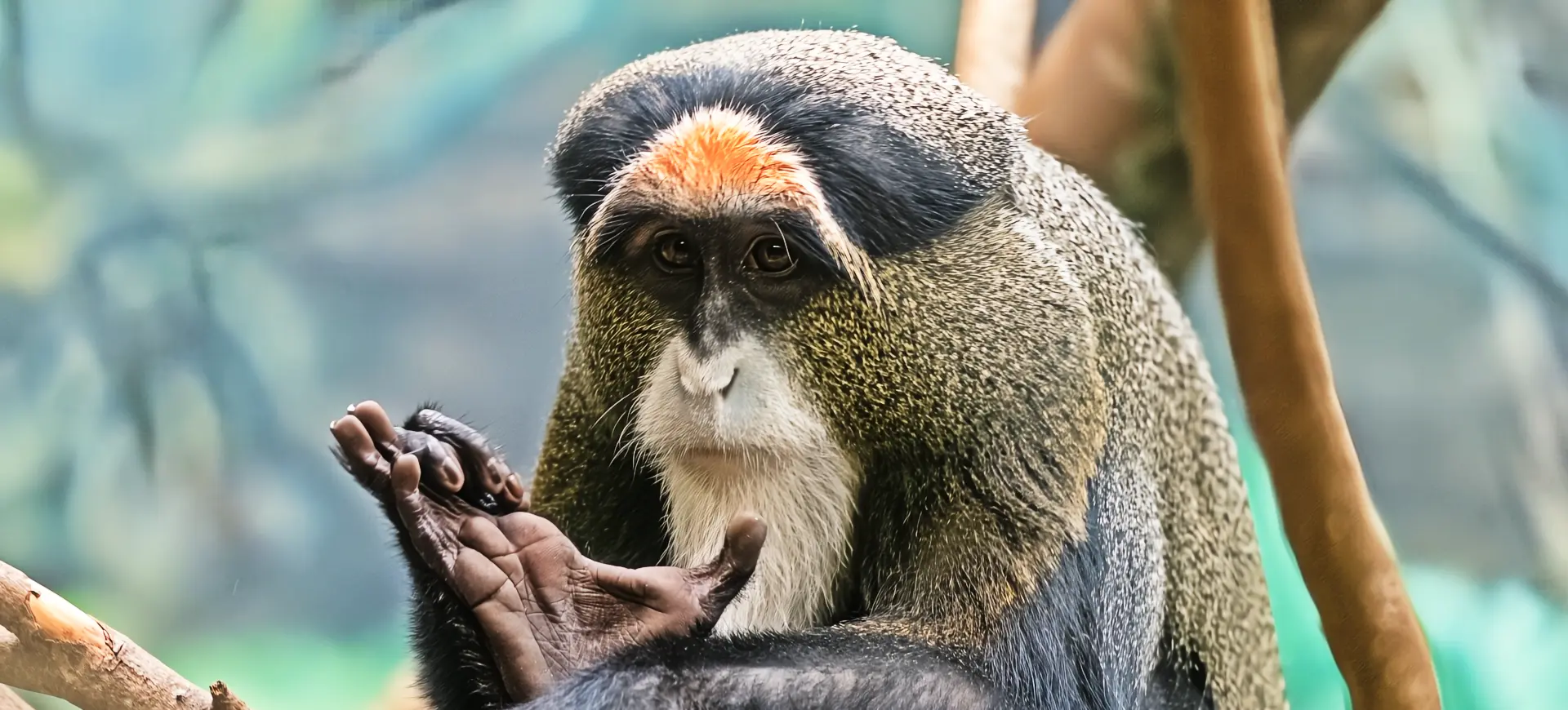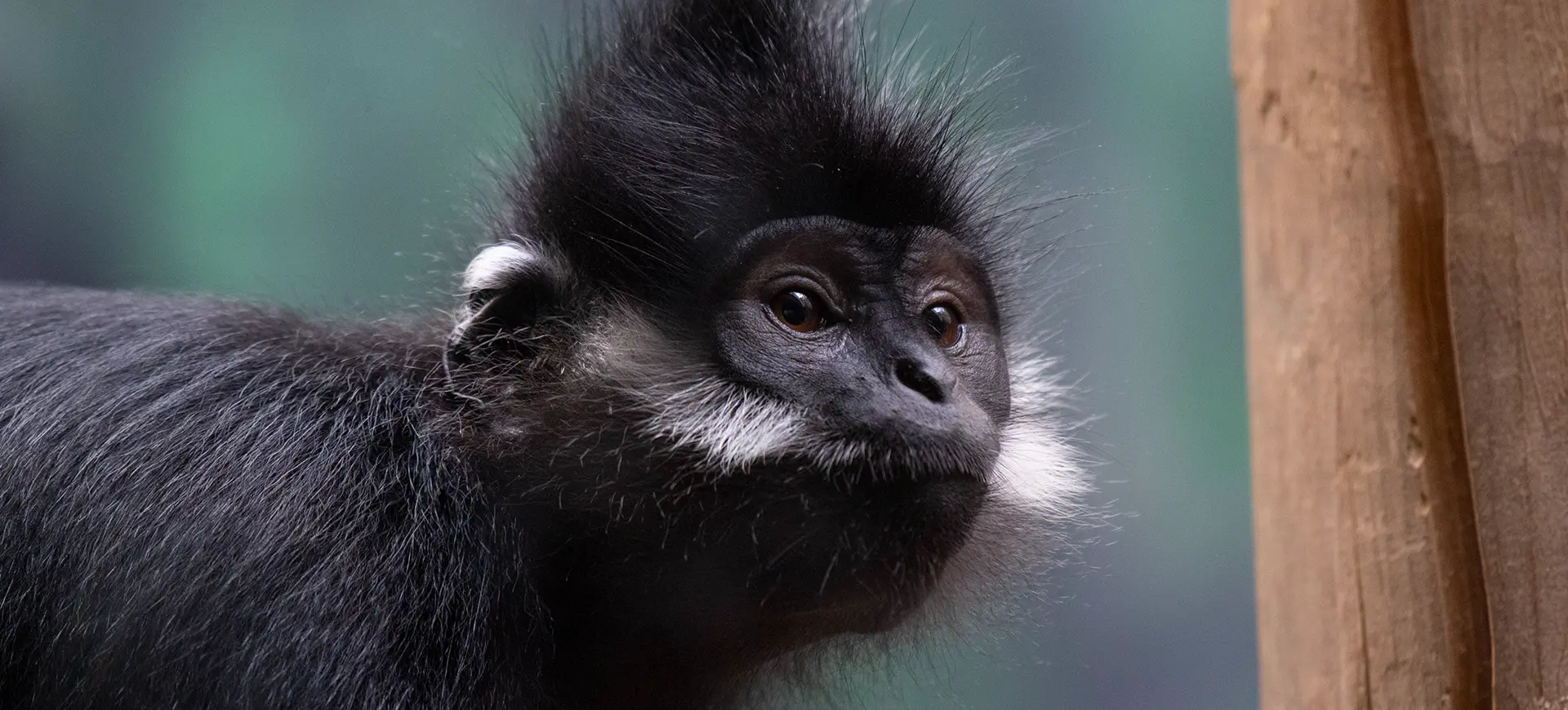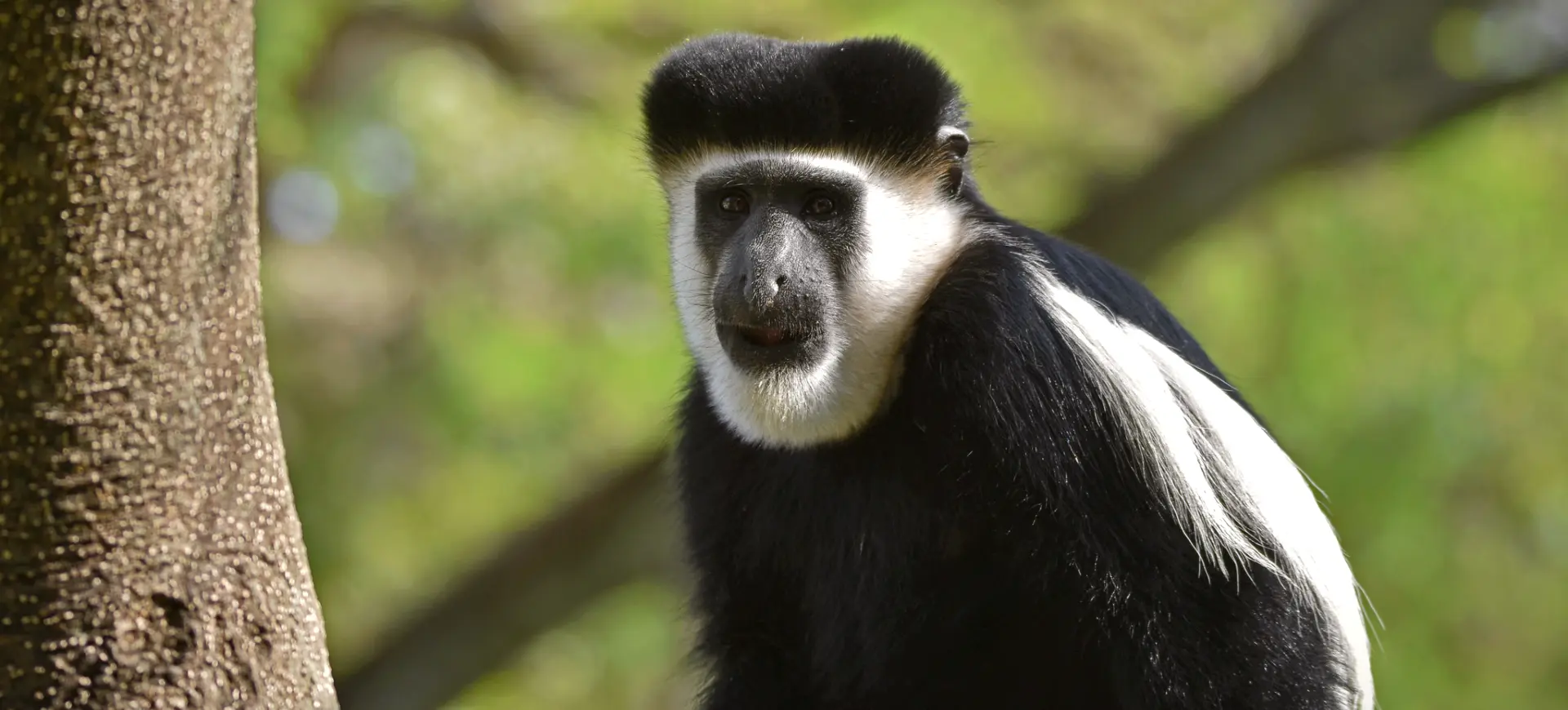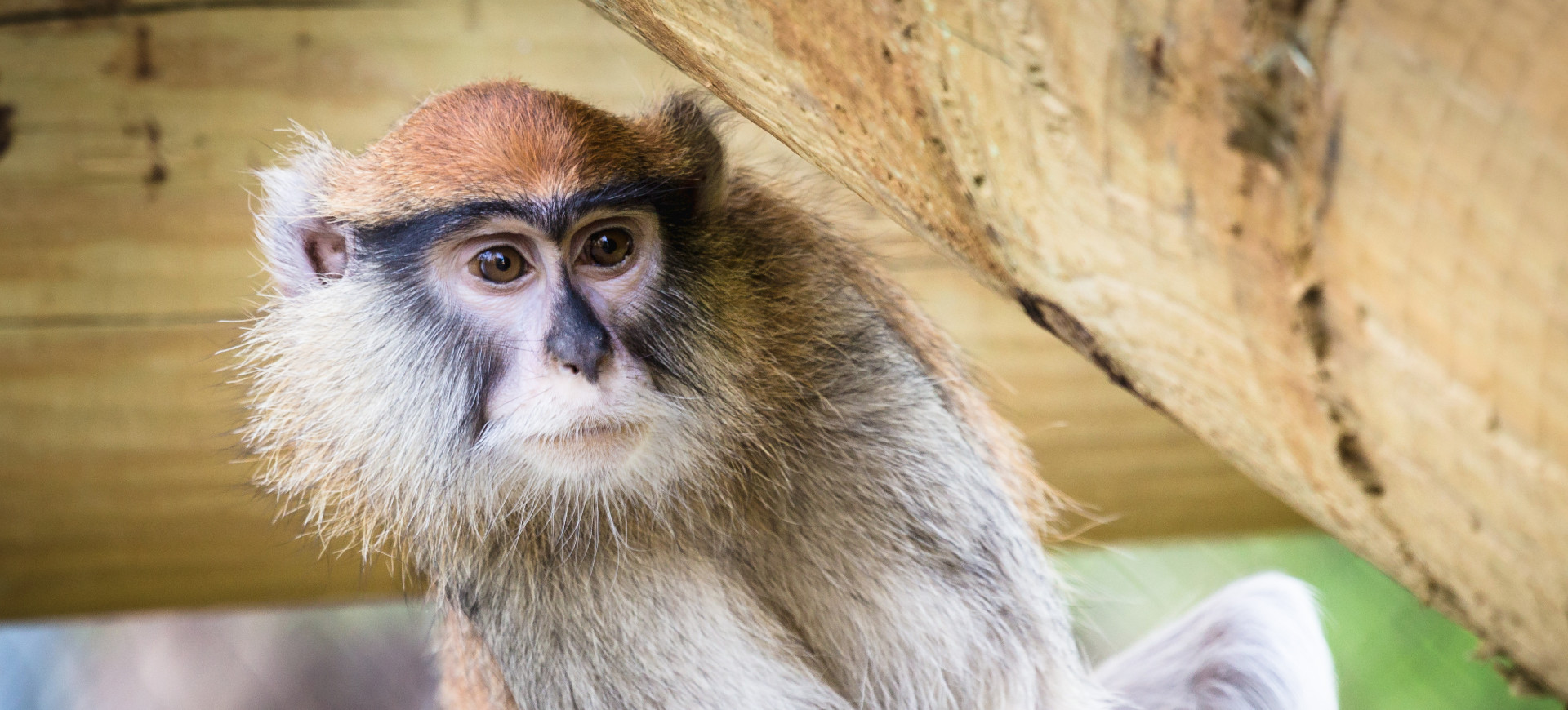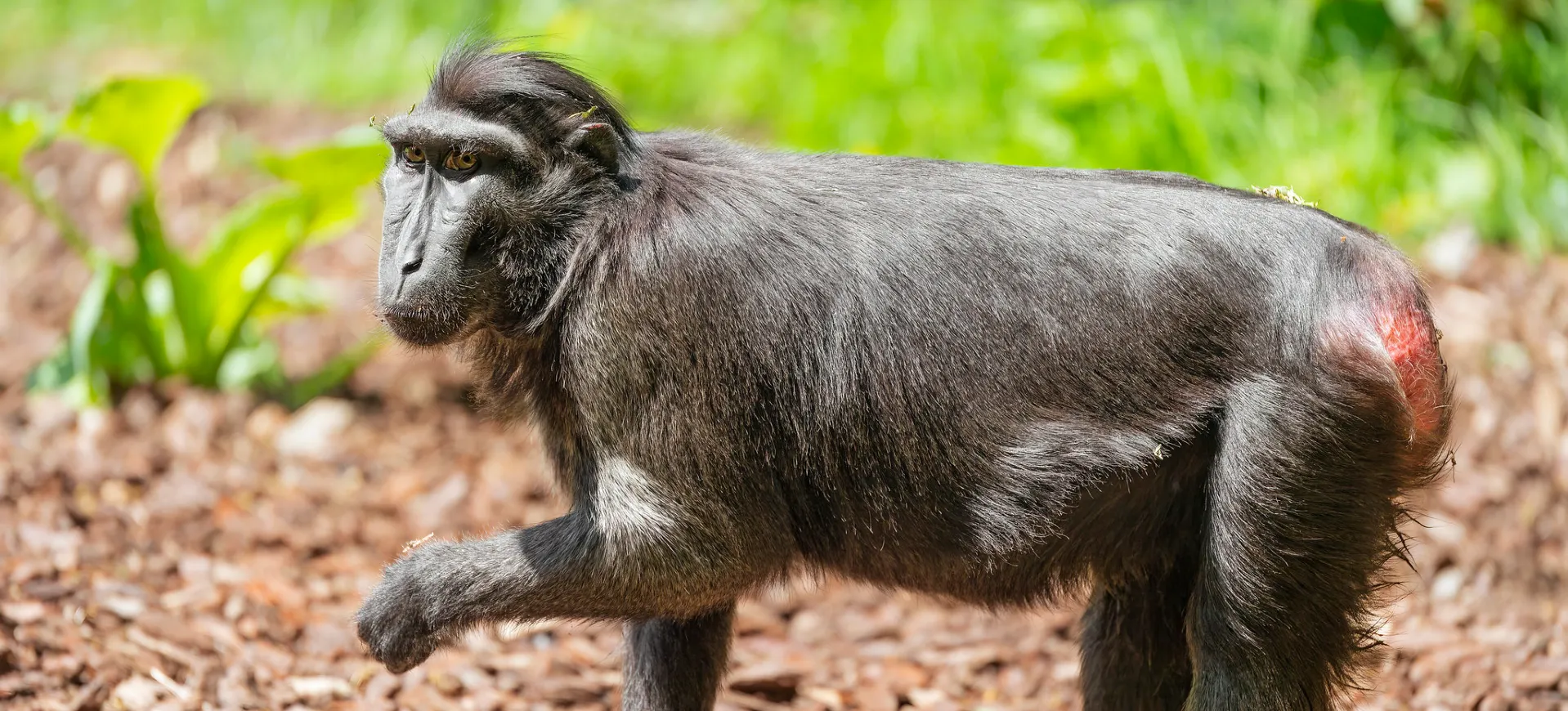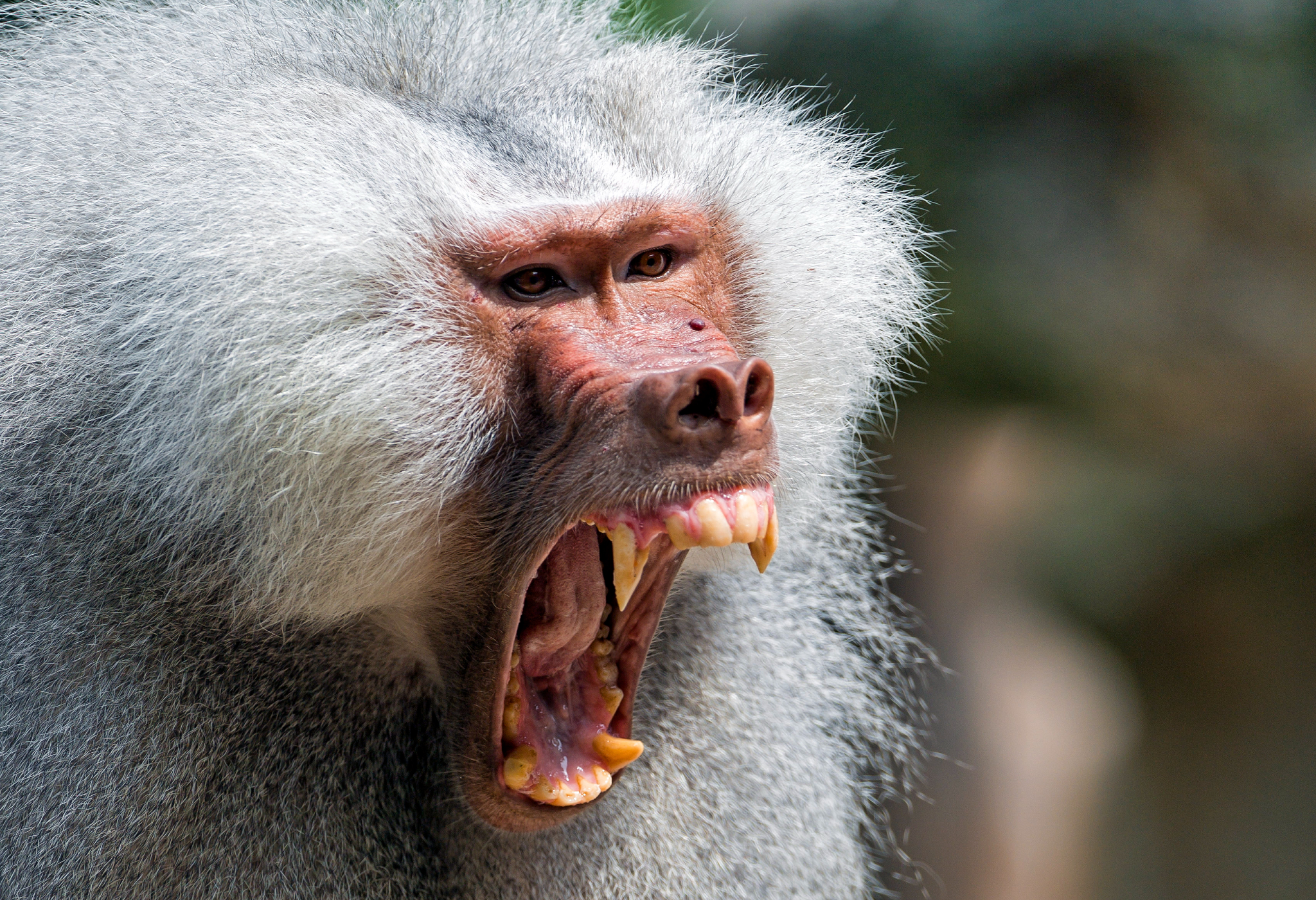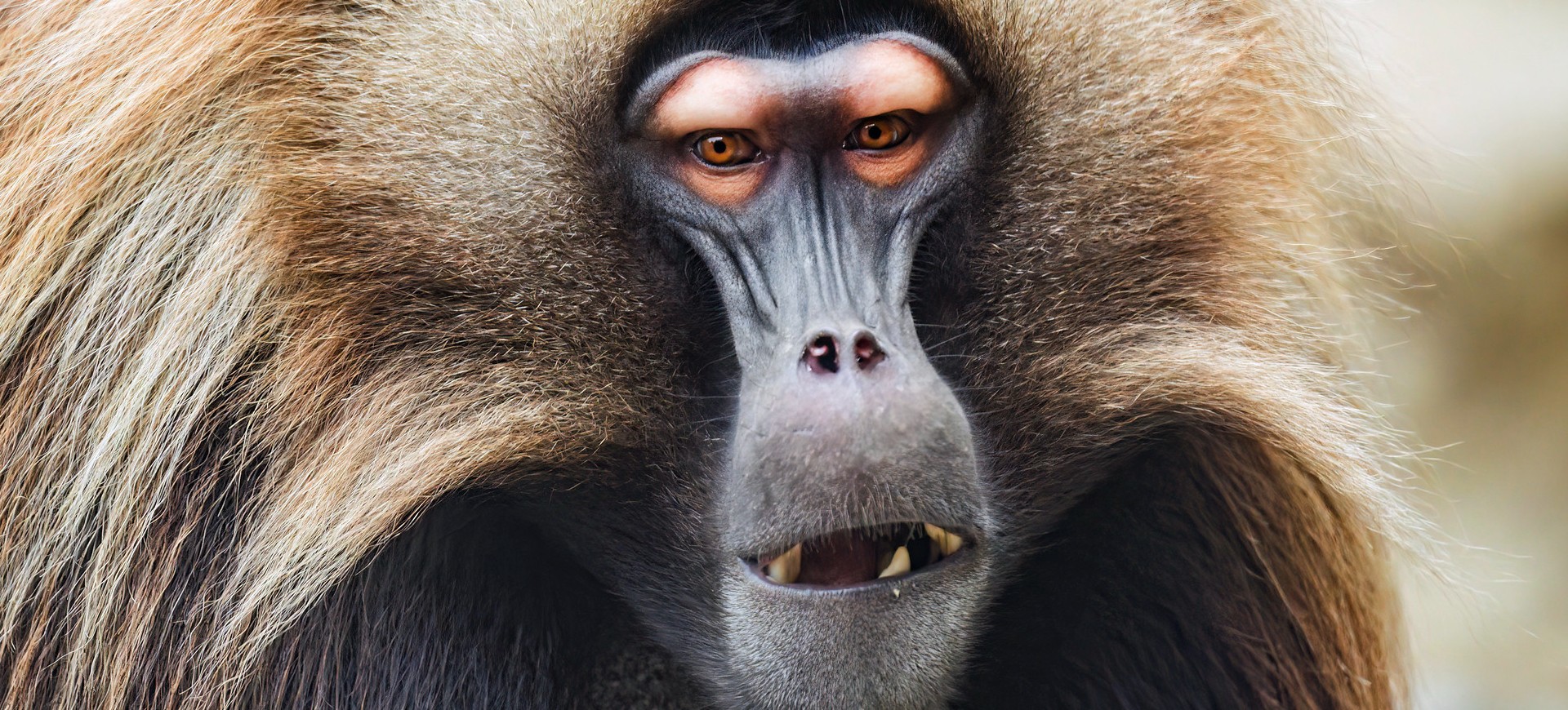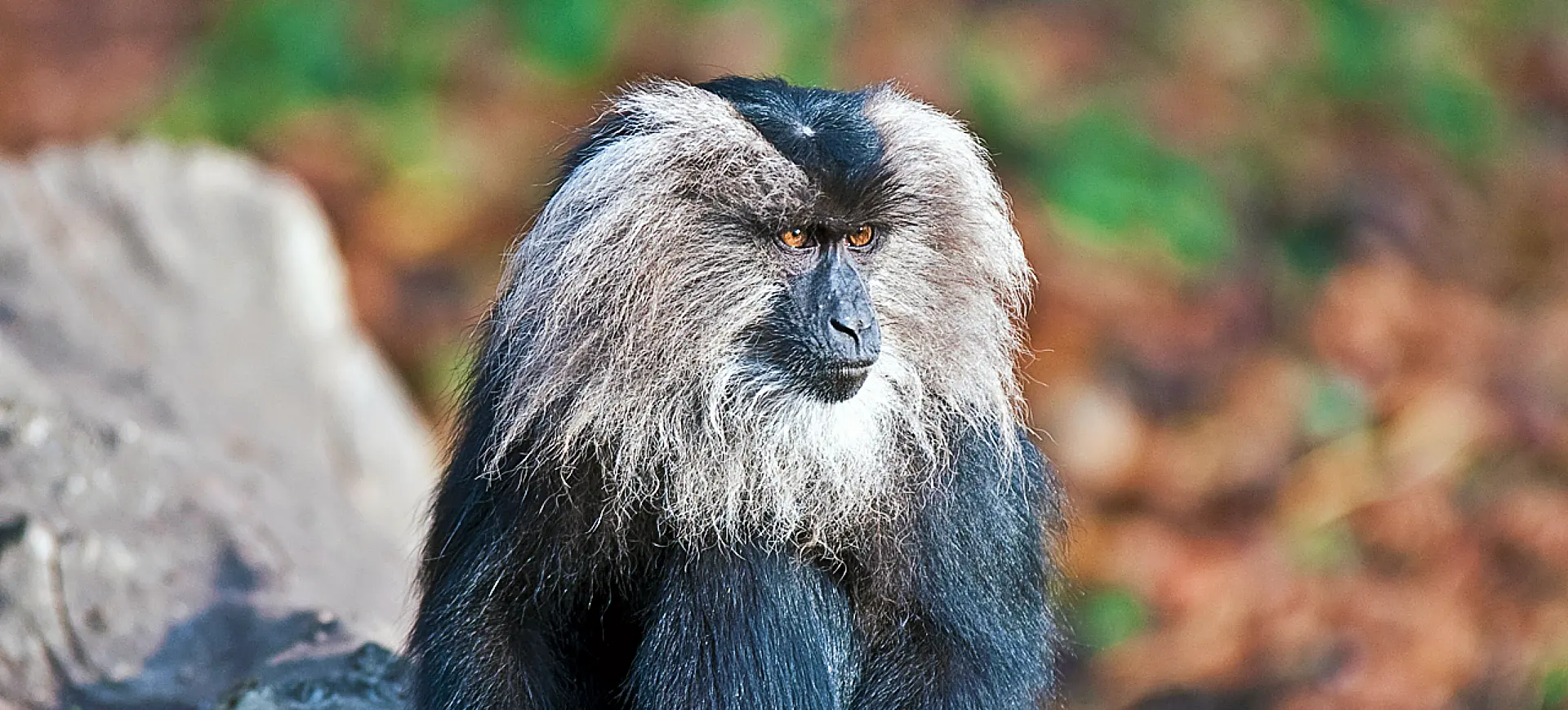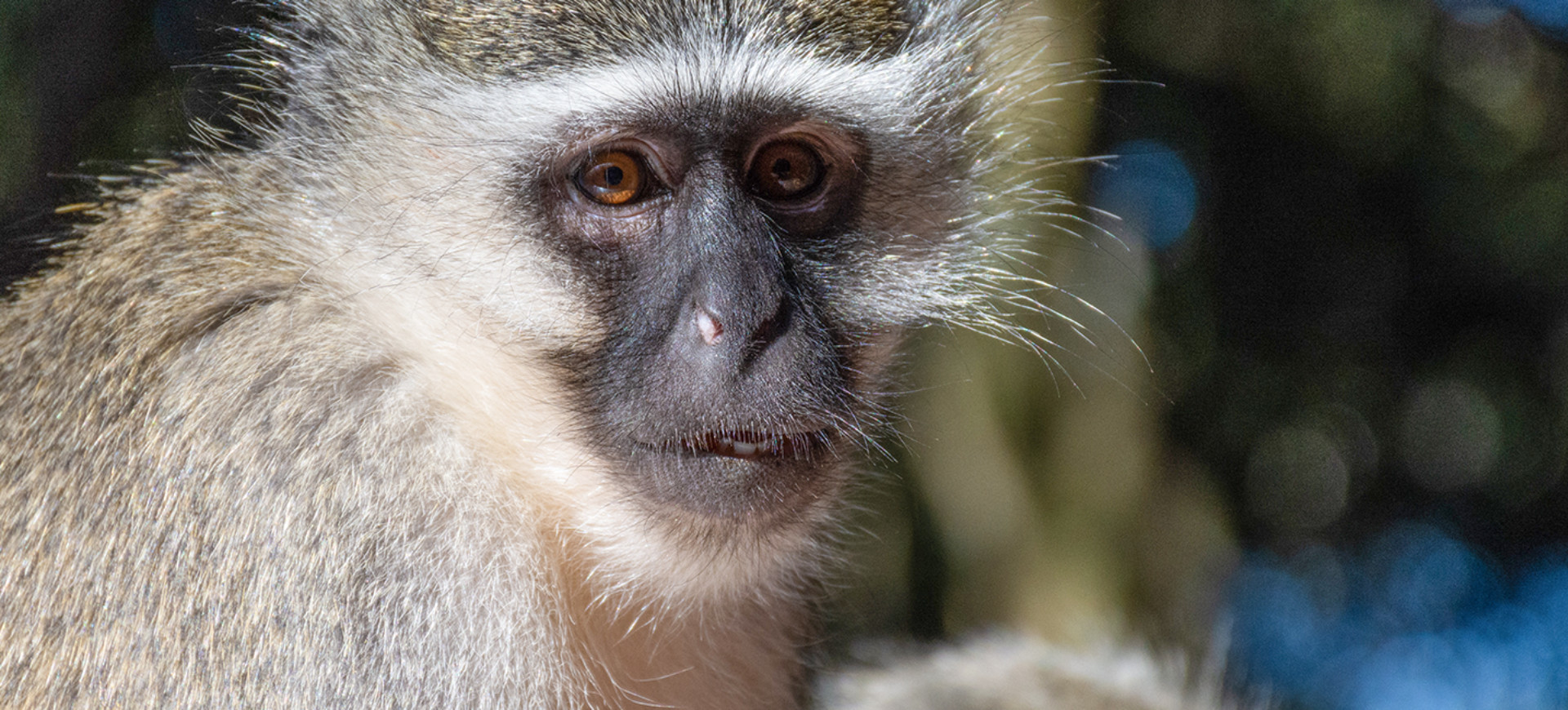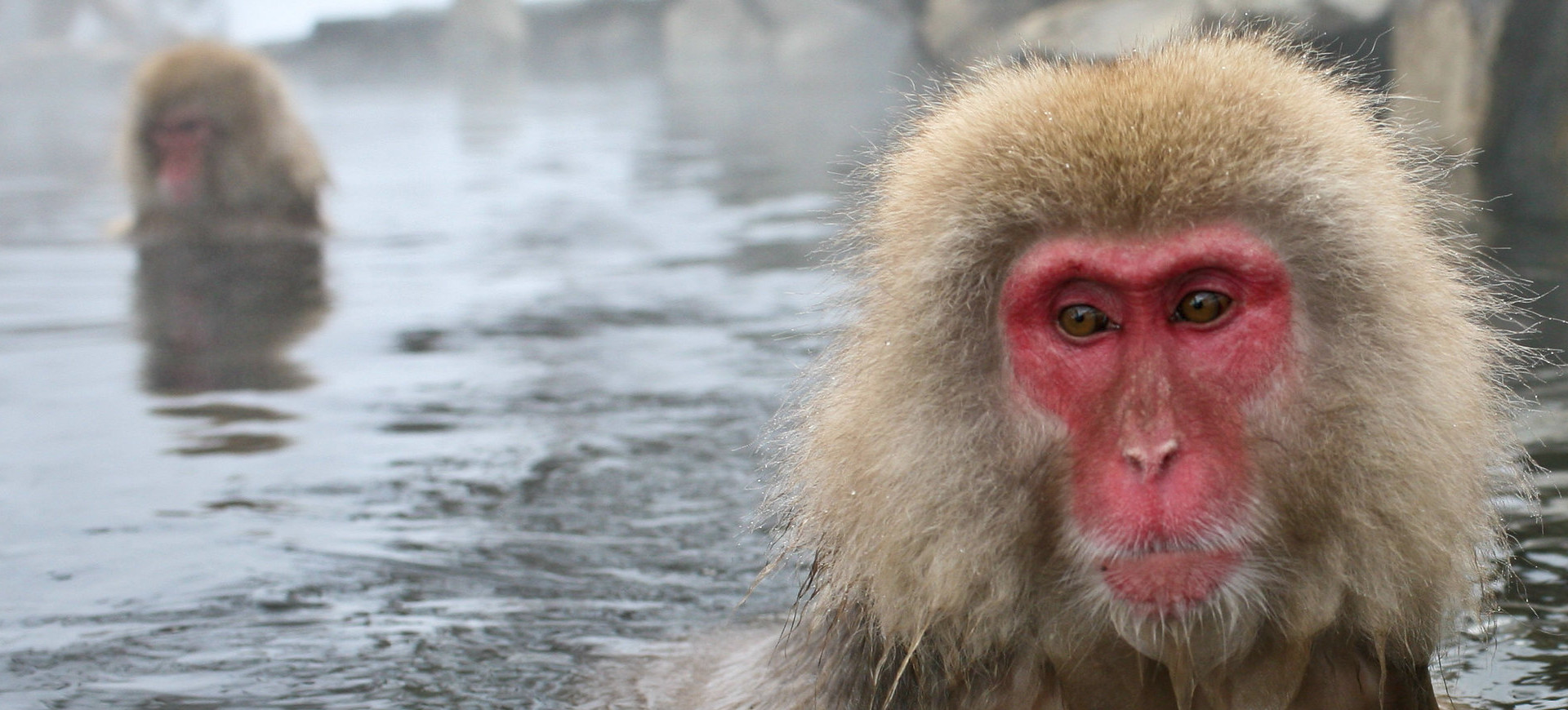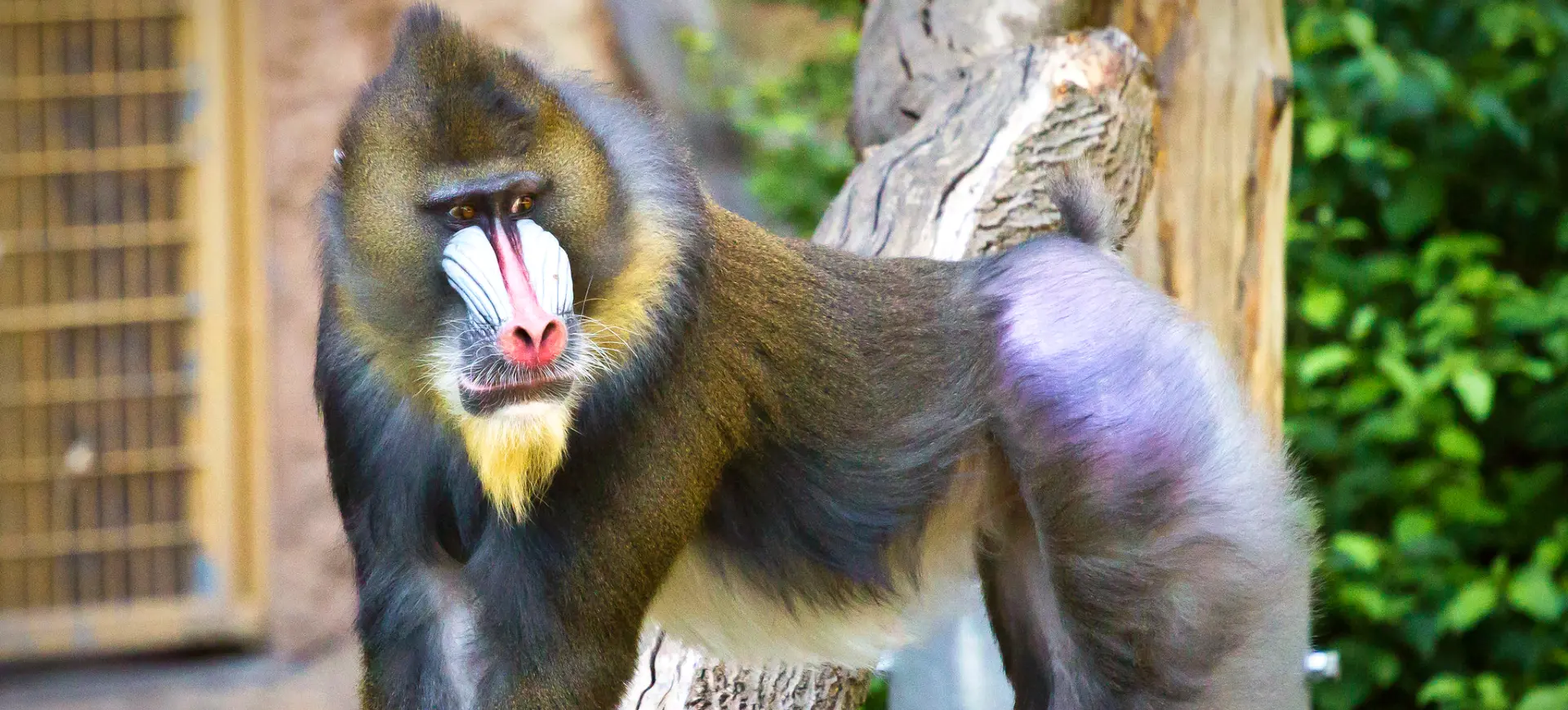Overview
Wolf’s Guenon, also known as Cercopithecus wolfi, is a remarkable primate species native to central Africa. They are primarily found in the Democratic Republic of Congo and the Central African Republic. Characterized by vibrant fur, their appearance is notable for patches of contrasting colors, which help them blend into their natural forest habitats.
Wolf’s Guenon are highly social animals, living in groups comprising one adult male, several adult females, and their offspring. These groups are strongly hierarchical, with clear lines of authority and roles. Communication within the group is complex, involving a range of vocalizations, facial expressions, and body postures.
They are predominantly arboreal, spending the majority of their lives in trees. This adaptation is essential for their survival and lifestyle, as the trees offer protection from predators and provide a rich food source, including fruits, leaves, and insects.
Taxonomy
Kingdom
Phylum
Class
Order
Family
Genus
Species
Sub Species
Type
Physical Description:
Wolf’s Guenon is strikingly colorful, featuring a mixture of gray, white, and red fur. Their faces are generally lighter in color, with dark markings around the eyes and mouth. Males are generally more vibrant in color than females, which is believed to play a role in mating rituals.
They possess a medium build, with body lengths ranging from 40 to 60 cm. Their tails can be longer than their bodies, offering balance while navigating their arboreal habitat. Their hands and feet are highly adapted for gripping branches, making them agile climbers.

Lifespan: Wild: ~20 years || Captivity: ~25 years

Weight: Male: 9–12 lbs (4–5.4 kg) || Female: 7–9 lbs (3–4 kg)

Length: Male: 20–24 inches (50–60 cm) || Female: 16–20 inches (40–50 cm)

Height: Male: 16–20 inches (40–50 cm) || Female: 14–18 inches (35–45 cm)

Top Speed: 20 mph (32 km/h)
Characteristic:
Native Habitat:
Wolf’s Guenon is endemic to the central regions of Africa, specifically in countries like the Democratic Republic of Congo and the Central African Republic. They are generally found in primary and secondary tropical rainforests but are also known to inhabit swamp forests and riparian zones near rivers.
Their habitat selection is closely linked to the availability of food resources and safe nesting sites. The layered canopy of tropical forests provides both, allowing them access to a varied diet and offering protection from predators like birds of prey and larger mammals.
Climate Zones:
Biomes:
WWF Biomes:
Biogeographical Realms:
Continents:
Countries:
Diet:
Diet & Feeding Habits:
Wolf’s Guenon predominantly consumes fruits, supplemented by leaves, insects, and smaller prey. Their arboreal lifestyle makes it convenient for them to forage for food. The group’s social structure aids in efficient food gathering, with lower-ranking members often alerting the group to new food sources.
The dental structure of these primates is adapted to their diet. Their incisors and molars are particularly well-suited for gripping and grinding food. As omnivores, they are highly adaptable in their food choices, which gives them a significant survival advantage in fluctuating environmental conditions.
Mating Behavior:
Mating Description:
Wolf’s Guenon has a polygynous mating system, where the dominant male in the group mates with multiple females. The social hierarchy within the group plays a critical role in mating, with the alpha male often having priority access to receptive females.
Mating usually occurs during the wet season when food is abundant, facilitating better conditions for pregnancy and raising young. After a gestation period of around 5 to 6 months, females typically give birth to a single offspring. The mother mostly provides parental care, although other females in the group may assist.
Reproduction Season:
Birth Type:
Pregnancy Duration:
Female Name:
Male Name:
Baby Name:
Social Structure Description:
The social structure of Wolf’s Guenon is polygynous and hierarchical. Groups are usually led by a dominant male who has mating rights to the females within the group. Females also have their hierarchy, generally determined by age and experience. Social bonds are strong, and grooming is a common social activity.
The structure allows for efficient foraging and protection against predators. While the dominant male usually takes up the sentinel role, the females primarily care for the young and gather food. Vocalizations, body postures, and facial expressions are integral to their complex communication system.
Groups:
Conservation Status:
Population Trend:
Wolf’s Guenon is currently listed as Least Concern by the IUCN. However, they face increasing threats due to habitat destruction caused by human activities like logging and conversion of forest land into agricultural areas. Generally, populations in protected areas are stable, but those outside are declining.
Efforts are being made to accurately count their numbers in the wild. Various non-governmental organizations are involved in monitoring and conservation, but the lack of comprehensive data makes it challenging to assess their populations’ actual size and distribution.
Population Threats:
The major threats to the Wolf’s Guenon population include habitat destruction, primarily due to logging and agricultural expansion. In some areas, they are hunted for bushmeat, although this is not as significant a threat compared to habitat loss.
Climate change is also a growing concern. The alteration of their natural habitats could lead to reduced availability of food and increased susceptibility to diseases. These threats collectively contribute to the gradual decline of their populations outside protected areas.
Conservation Efforts:
Conservation strategies primarily focus on habitat preservation and anti-poaching measures. Several protected areas within their range aim to provide a sanctuary where they can live and reproduce safely. Educational programs are also in place to raise awareness about their conservation status.
Efforts are also being made to conduct more comprehensive population surveys to better understand their distribution and numbers. These data are crucial for shaping future conservation strategies, and various organizations are collaborating to ensure the long-term survival of Wolf’s Guenon.
Additional Resources:
Fun Facts
- Wolf’s Guenon has over 20 different vocalizations for communication.
- They are one of the most colorful monkeys in Africa.
- Wolf’s Guenon can leap up to 6 feet in a single jump.
- The species was named after the German naturalist Ludwig Wolf.
- Their long tails are almost as long as their bodies.
- They are skilled swimmers and occasionally venture into the water to escape predators.
- Wolf’s Guenon forms mutualistic relationships with other primate species for better protection against predators.
- They have cheek pouches to store food for later consumption.
- The species is predominantly diurnal, being most active during the day.
- Unlike some other primates, Wolf’s Guenon does not use tools.





